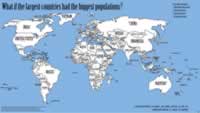Archives → Number
Dates as Operations 2018
In 2017 I published a post Dates as operations 2017 - a collaborative effort to write a mathematical statement from the digits of the date.
Here is the 2018 version. To quickly access in class type gomaths.net/dates into your address bar.
Updated for 2019: gomaths.net/dates
Updated for 2021: gomaths.net/dates
Updated for 2022: gomaths.net/dates
Updated for 2023: gomaths.net/dates
Dates as Operations 2017
Like most teachers I write the date at the top of the whiteboard each day. As an extra point of interest, in 2016 I endeavoured to write a number sentence using the digits of the date, in order, underneath the date.
Self-checking Christmas Worksheet
Here's a self-checking, simple questions, as you get the answers correct the tree lights up.
Nothing fancy. Just needed something for a computer lab tomorrow.
Number of the day
Here's a starter activity I have built on MathsStarters: Number of the day.
Number Sense Posters
For a few years, I’ve noticed that kids not only don’t know/struggle with their times tables, but also general ‘number sense’.
Kitchen Scale
I put up my first image on Dan Meyer’s 101 Questions yesterday, Kitchen Scale. Wander over there.
What’s the first question that comes to your mind?
Times Tables Grid Wall Poster (Made4Math)
It’s the last day of term here, so teachers might want to spend some time today fixing up their room. So, I brought my Made4Math Monday forward.
I needed some times table posters for my classroom, but the posters you can buy tend to be for younger students and I haven’t seen a grid version (rather than each table listed separately).
Lift Buttons
Whilst often used as a textbook example, I had never seen negative numbers used in a lift before.
Tables Spider
In 2007, I wrote about a resource, a Number Spider, that I used as a lesson starter.
What if the largest states of Australia had the biggest populations?
You might have seen this map featured around the place recently:
So I wondered, what if the largest countries had the biggest populations?
Follow-up to WCYDWT: Spacing Evenly
I showed WCYDWT: Spacing Evenly to some of my classes this week. A couple of reflections…
WCYDWT: Spacing Evenly
A real-life version of this problem presented itself today.

(Source: Elementary Math Mastery, Rhonda Farkota)
Letters and Numbers
Jeff of Webmaths points out a new Australian TV show, Letters and Numbers.
Guessing to learn
This week, my Year 8s have been looking at inequality signs, graphing inequalities and solving simple (one-step) inequalities. Today, after solving inequalities, we played a simple game. A simple, obvious game, that really doesn’t warrant a blog post.
Words for operations
I’ve been meaning to try ClassTools.net for a while. With ClassTools.net you can make interactive Flash games, from a range of templates, then save and share them.
Million, billion, trillion
I used to think that I knew what 1 billion was, i.e. 1 000 000 000 000. Then a couple of years ago, I looked on Wikipedia and found there were two defintions: Long and short scales.
The Big Picture
If you don’t have The Big Picture from boston.com in your RSS feeds, it’s time to add it. Alan Taylor regularly collects some fascinating photos together. This edition, At work.
The Story of 1
Here’s a video about the history of number, in particular the numbers 0 and 1. Our Year 7 program begins the year looking at ancient number systems, so this video will fit in nicely.
New Subscribe to the …
MathsLinksemail newsletter
Get updates…
About
Simon Job — eleventh year of teaching maths in a public high school in Western Sydney, Australia.
MathsClass is about teaching and learning in a maths classroom. more→
Archive
Elsewhere
 @simonjob
@simonjob
updates via  @mathslinks
@mathslinks
Recently read/found.
Being a Vector is not Mutually Exclusive – Ringo Mok
maths vectorsInstagram
Gcf howie_hua maths
